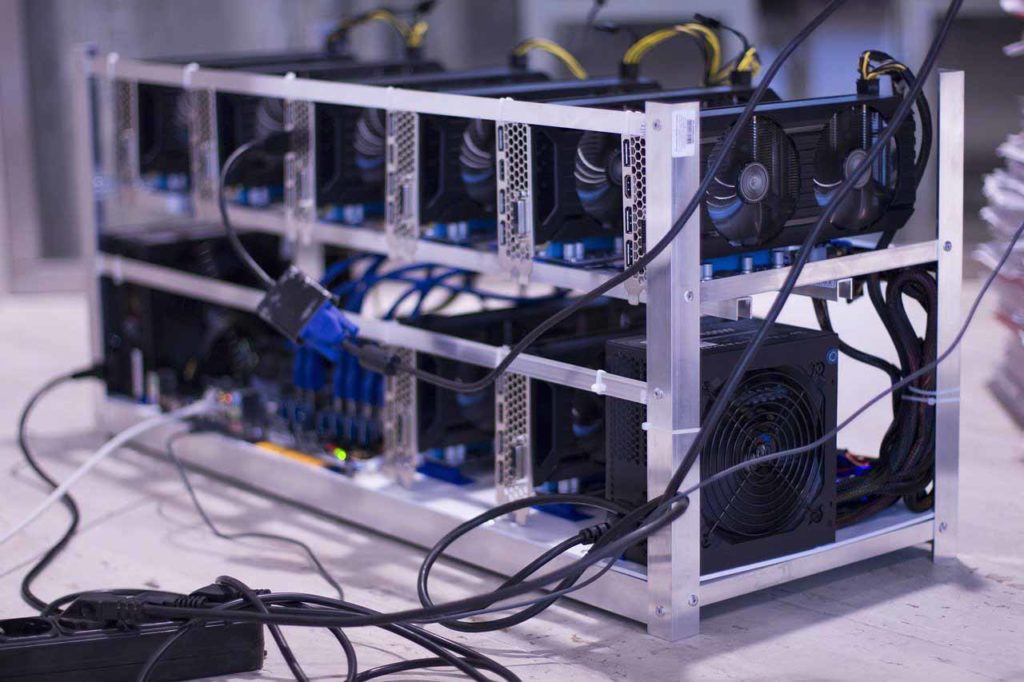Do you know one NFTs transaction could power an average American household for one and a half days? That’s right…according to estimates, buying a Jpeg file, a couple of MBs large requires an estimated 48.14 kwh.
That’s a lot of energy consumption right there.
But in reality, calculating these energy costs and carbon footprint is not as simple as I’ve put it. Research on the subject is limited and so far, we are only relying on estimates.
And as usual, this is only one side of the argument, as there is a whole other school of thought -and evidence- which suggests that NFTs might just be the awakening we need to invest in green technology.
Let’s dig into that climate debate!
The NFTs ecological cost debate
On one side, we have climate activists led by artists such as Joanie Lemercier or Memo Atken, saying NFTs are bringing a whole bunch of environmental concerns that need to be addressed.
On the other side, we have NFTs marketplaces saying the activists are calculating the costs wrongly, somewhat exaggerating the figures.
And in the middle, we have those who believe that these concerns are temporary and that NFTs could be fuelling investment in green technology.
But what’s really going on?
Memo Atken’s viral Medium post is a big element of this debate. He analyzed 8000 transactions involving 18000 NFTs on SuperRare (an NFTs marketplace) and he concluded that a single transaction produces 82 Kwh with emissions of 48Kg Co2. Further research found out that the problem is compounded when artists release several editions of the same piece of art.
That’s mind-boggling, right?
(As outlined in the research, a single transaction involves minting, bidding, actual sales, etc).
His findings are alarming.
However, In December 2020, SuperRare wrote a clarification medium post, in itself a rebuttal to Memo Akten’s controversial cost counting expose.
These posts kind of set the stage for the ongoing debate.

The main issues with NFTs and the tech behind
NFTs can take any digital form including images, videos, GIFs, tweets… heck, even Jack Dorsey sold the first tweet for $2.9 Million.
And even that pales in comparison to what Beeple (a digital artist) sold a Jpeg image for -a whopping $69.3 million.
Judging by these numbers, NFTs are money makers.
But some may argue, at what cost?
Ethereum and its proof of work mechanism
You see, most NFTs are created (a process referred to as minting) on the Ethereum blockchain, simply because the main marketplaces are based on it.
Blockchains are computer networks that bring a decentralized form of governance, unlike central banks that use a centralized form of governance as power is concentrated on one central point.
And this is huge! Decentralized governance means fewer fees, anonymity, security, and full control for the users.
However, the creators of Bitcoin, who pioneered blockchain and cryptocurrencies, realized that for it to work they needed to secure the network. Also, they had to achieve consensus on the blockchain among the active members.
To do so, they adopted the Proof of Work (PoW) validation mechanism.
Ethereum uses a similar mechanism. However, plans are underway to migrate toPproof of Stake (PoS) -we’ll talk about that later.
In simple terms, proof of work is run by people referred to as miners. Their job is to solve complex computer puzzles for a reward in new blocks. The first person to solve the problem gets a reward and this means that at any given time, miners are competing with each other to see who can get the reward faster.
Sounds like fun.
However, solving these complex computer puzzles, and doing it as fast as possible brings 2 main environmental issues.
- It requires powerful computers and uninterrupted time. Ordinary computers won’t cut it, so they use high-powered computers.
- This isn’t a “one-person in his garage job” anymore. Miners are located in power-consuming mining farms all over the world (especially in places where electricity is cheap – to minimize the costs).
In short: On the surface, when you are transacting on a blockchain like Ethereum, there’s an army of power-hungry computers running in the background. Get the picture?
To put it into perspective, the Ethereum blockchain (which NFTs run on) consumes the equivalent of a year’s worth of energy in New Zealand annually. While its total annual carbon emissions can be compared with that of the Republic of Ghana, a West African country of over 31 million people.
Believe it or not, the system was deliberately created that way to dissuade users from launching attacks. The cost implication, they figured, is far much greater than the reward.

Lack of information and transparency
The lack of transparency from CryptoArt platforms isn’t helping. At the time of writing, they are still doing little efforts to communicate the environmental impact of transations on these platforms.
To illustrate this, let’s have a look at the story of French artist Joanie Lemercier.
A fews years ago, Joanie Lemercier decided it was time for him to lower his environmental impact as an artist. This means cutting plane travel and considerably reducing the energy consumption of his studio. Heck, he even became a climate activits, attending protests againg coal mining!
He was doing a great job, reducing the power consumption in his art studio by 10% per year until November 2020, when he thought he had found the ultimate solution: CryptoArt.
Following the hype of NFTs and the appeal of digital distribution (what he believed would reduce his energy consumption), he sold 6 NFTs on Nifty Gateway (a famous CryptoArt marketplace).
What he thought was a success turned out to be a disaster: He sold his NFTs in only 10 seconds, but the sale consumed more electricity than the entire studio over the past 2 years.
Why did he do it? Simply because he didn’t know about the waste of electricity it would generate.
And how did he discover his impact? Not thanks to Nifty gateway as they ignored his requests for information. He had to contact Offsetra, a company that calculates carbon footprint for ETH wallets.
Why NFTs might not be so bad after all?
So, one thing is sure, NFT hurts the environment, at least from what we’ve covered! But does that mean we should ban NFTs?
Let’s have a look at the “counter-arguments”.
Ethereum going from Proof of Work to Proof of Stake
The main problem of Ethereum when it comes to the environment (and transfer fees)? The PoW validation mechanism.
As it is, even stakeholders have recognized its ecological cost, and Ethereum is working towards migrating to Ethereum 2.0, a set of upgrades that includes switching to a Proof of Stake mechanism.
(Ethereum says Ethereum 2.0 may be ready in 2022. However, it has been in development for years)
Even activists such as Memo agree that it should be a game-changer.
Unlike PoW, the PoS mechanism does not rely on high-powered computers and miners don’t compete against each other for the creation of the same block in the blockchain. This results in a considerable reduction of energy consumption and makes Proof of Stake a much more sustainable mechanism.
Here are some of the key differences:
- Miners are now called validators
- Validators have to deposit their own cryptocurrency to participate (= stake)
- A single validator is selected to create a block, based on the value of his stake
- A validator who misbehaves on the network loses its stake
Still unclear? Have a look at the following video.
Ethereum isn’t the only option!
Ethereum being the most popular doesn’t mean it’s the only blockchain that can be used to mint NFTs.
Several “NFT-ready” blockchains are already using the Proof of Stake validation. Tezos, Cardano, Polkadot, Solana, Polygon and Binance Smat Chain being some of the most popular at the moment.
And there is a growing list of more “eco-friendly” platforms using these blockchains. Kodadot (Polkadot), Kalamint (Tezos), Solible (Solana), and Lovada (Cardano) being some of them.
However, if Ethereum remains so popular, it’s also because it has the biggest market cap, supposedly making it a “much safer” bet than smaller cap cryptocurrencies. Especially since cryptocurrencies values are so volatile. Are you ready to mint or buy NFTs on a blockchain whose coin value could drop to 0 in only a few weeks?
But volatility aside, let’s not forget that competition is healthy in business. It pushes companies to give the best of themselves, rather than simply resting on their laurels. And Ethereum’s team taking huge risks switching from PoW to PoS to meet users’ needs and stay competitive against smaller PoS blockchains is proof.
An opportunity for green technology
Let’s not forget NFT is a rather new concept that rely on a relatively new technology as well.
As the UK-based Fintech investor, Victor Prokopenya put it aptly:
100 years ago people made cars that had high carbon emission but that did not stop car manufacturing. Instead we improved the technology.
In his view, this debate will come to an end in the next five years as we improve blockchain technology.
Then, Raoul Pal has also an interesting view on that topic, which he explained during an episode of “The Prof G Show” podcast.
Talking about podcasts, have a look at our favourite NFT related podcasts.
As we said earlier, many mining farms are located in countries with cheap, subsidized electricity, such as Iran or China. This sounds like an environmentalist nightmare.
However, Raoul sees it differently. He said that if any mining farm located outside of these countries wants to compete, they’ll have to find an even cheaper source of electricity. And this is simply impossible to do with coal power or oil power.
So what are their options?
Investing in renewable energy sources such as hydropower. Because, to quote Raoul Pal:
Green technology, in the end, is the cheapest way of producing electricity.
For climate activists, this may not be enough because they feel the entire blockchain designs are to blame, but it sure is a step in the right direction!
The plane analogy
Another argument is the plane analogy fronted by Joseph Pallant (a carbon professional and co-founder of Blockchain for climate foundation) and echoed by SupeRare in their Medium post (linked above) using a… train analogy.
Pallant suggested that to calculate efficiently the carbon footprint caused by NFTs, we should take the same approach as with commercial planes’ travel emissions.
Let’s say you don’t want to fly, because of the high carbon emissions of air travel. Some can argue that the plane will fly anyway and carry other passengers. In the process, it will have its fair share of emission nonetheless.
The point is that Ethereum’s energy consumption is fixed at a given point in time and doesn’t increase if the transactions increase. The plane flies and the train drives, whether all the seats are busy or not.
Remember, NFTs are only part of the larger Ethereum blockchain. Therefore, the miners are busy working behind the scene whether NFTs transactions take place or not.
To be honest, even though the analogy makes sense, we feel like the “I do it because the others will do it anyway” is never a good excuse when it comes to the environment.
But can we blame artists for wanting a piece of the cake? Especially when we know they probably had no idea of their environmental impact?
For most artists, crypto art has allowed them to thrive, to some extent turned them into overnight millionaires. For example, Beeple made a record-breaking sale in a highly publicized auction by Christie’s.
Platforms such as Reddit have an overzealous community of digital artists. Previously they could only have dreamed of making anything substantial from their art.
What the Future Holds For NTF and The Environment?

From the look of things, NFTs are here to stick around, despite their involvement in an alarming waste of energy.
Blockchain is a relatively young technology and there is much space for improvement. In fact, improvement is already on its way!
In the near future, proof of stake designs may take prominence in the NFT world, as even the proponents of NFT agreed that this should be a better way.
The biggest challenge of this shift is achieving consensus.
For the migration to take place successfully, all members on the blockchain must arrive at a consensus. If not, the blockchain may split into two and this could be the reason Ethereum 2.0 has been experiencing these delays.

